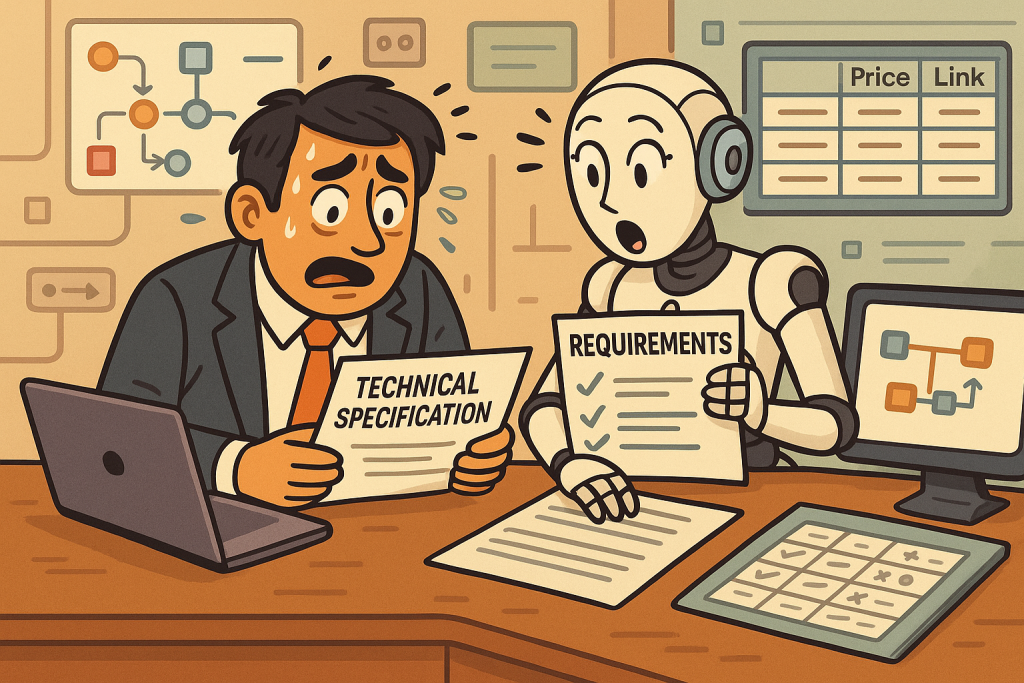A leading IT integration company struggled with significant inefficiencies in its workflow. The manual process of analyzing specifications and generating proposals took too much time. It caused errors and created a major bottleneck. The company decided to use AI to automate the process. The goal was to build a system that could act as a technical expert.
This case study explores how AI tender proposal automation transformed a slow, manual procurement workflow into an efficient, compliant system.
The Challenge: Overcoming Data Silos and AI Limitations
The main challenge was building an AI-driven system that generated compliant proposals quickly and accurately. The process involved several steps:
- Prioritized Sourcing: The system first needed to check for suitable products in the official registry of the Ministry of Industry and Trade to ensure regulatory compliance.
- Internal Inventory Check: If no compliant product was found in the government registry, the system then had to search the company’s own product inventory.
- External Search: As a final step, if no product was found in the internal or official databases, the system had to search the broader internet for suitable alternatives.
- Accuracy: Early experiments with general AI models failed. They often “hallucinated,” made wrong product suggestions, and couldn’t handle large files such as the 50 MB Ministry registry. They failed to correctly interpret the hierarchy of data sources, often ignoring the strict requirement to prioritize the official registry.
It became clear that a simple, off-the-shelf solution was not viable.
First of all, I explained to the company’s representative that we should split this task into a few steps in order to make the system.
That’s the system I prefer to use when I work with my clients:
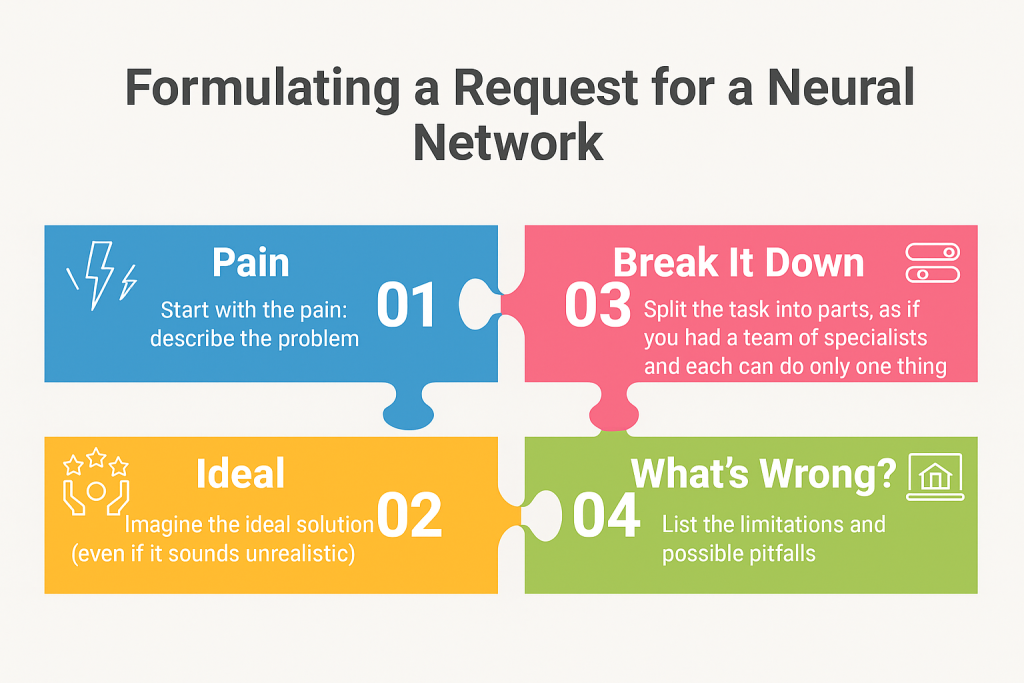
I realized that a simple, off-the-shelf solution wouldn’t work. The project needed a clear, structured approach. The AI had to follow logical steps and use a specialized knowledge base called Retrieval-Augmented Generation (RAG).
The Solution: A Sequential AI Agent in n8n
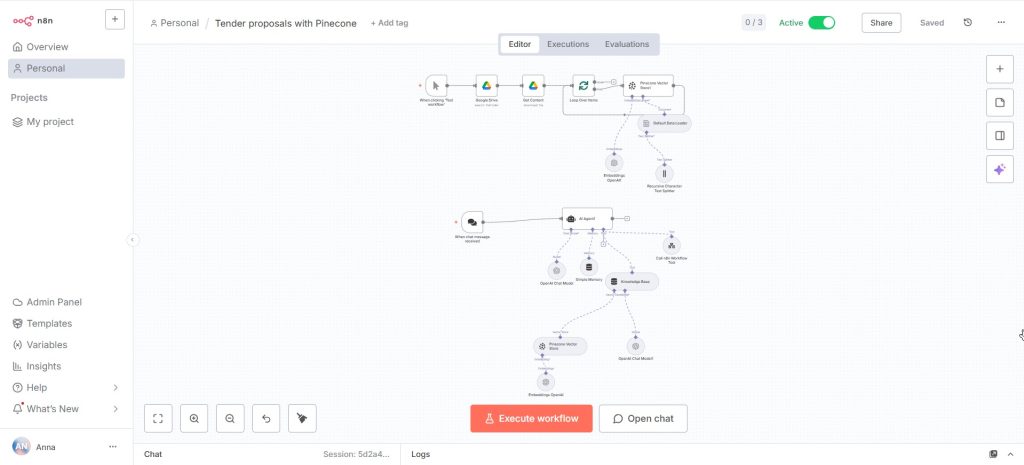
Here is a breakdown of the workflow:
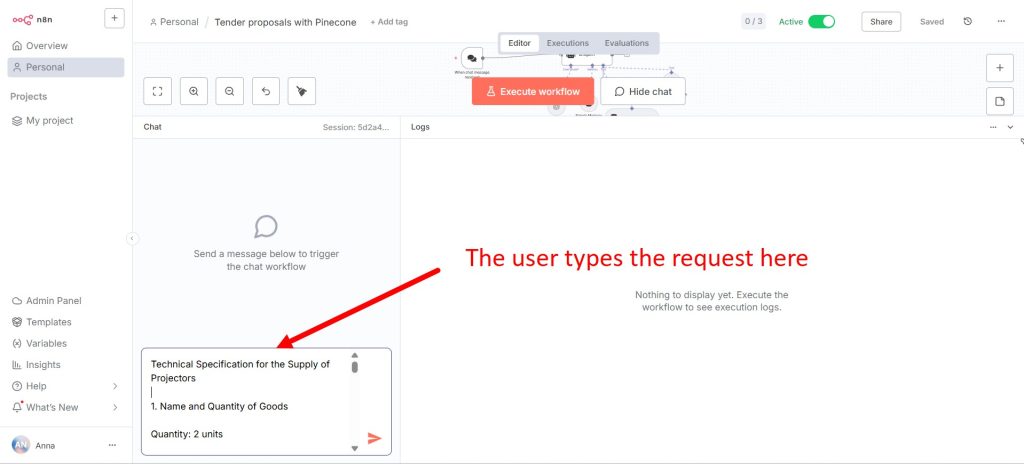
Initial Query – Ministry Registry: When a new tender arrives, the n8n workflow activates the AI agent. It immediately queries the Ministry’s database for compliant products. This step ensures that any proposals generated are fully compliant with government procurement regulations from the outset.
For this, we created a dedicated vector database in Pinecone. We filled the database with the full product inventory. This transformed unstructured data into a fast, searchable knowledge base. The agent queries this vector database to find a match from the company’s available stock.
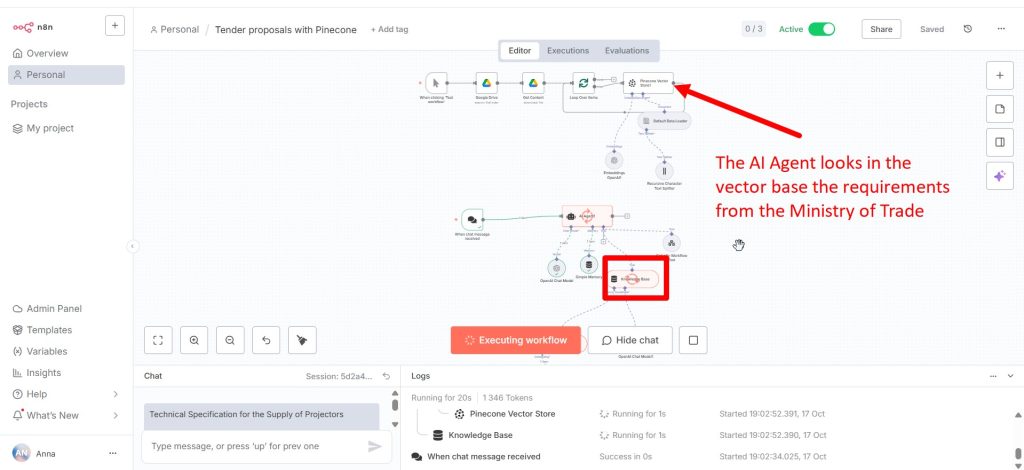
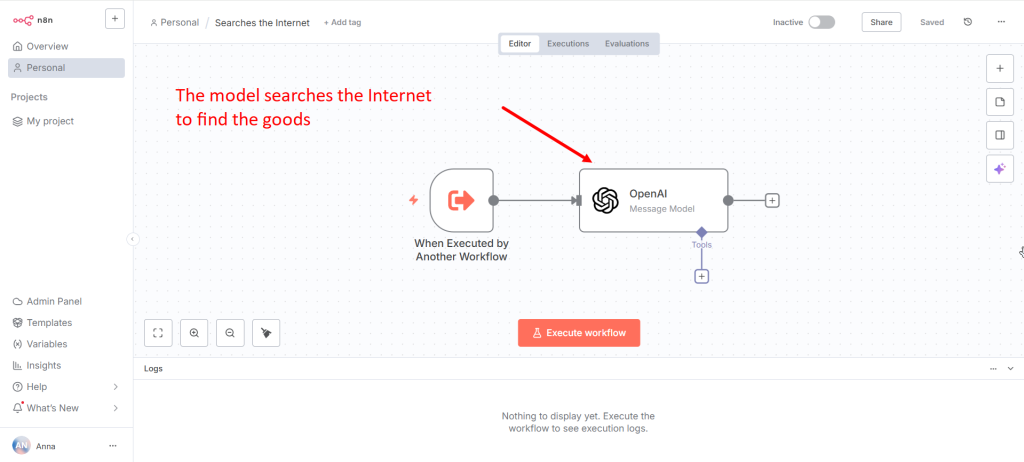
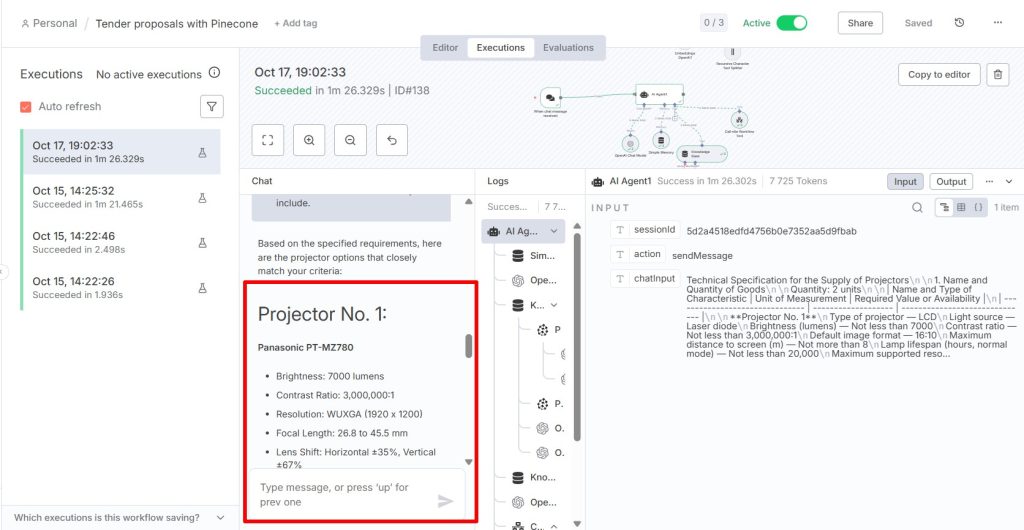
The Outcome
- Increased Efficiency: The system cut proposal generation time from hours to just minutes.
- Improved Accuracy: We eliminated AI hallucinations, which resulted in highly accurate and compliant proposals.
- Enhanced Scalability: The automated system let the team process more tenders without hiring additional staff.
This case study shows that general AI models can become powerful tools when used inside structured workflows with specialized data sources like Pinecone. It proves that AI tender proposal automation can revolutionize the tendering process by combining specialized data sources with structured AI logic.
This project serves as a successful example of how to overcome the common challenges of AI implementation and build a practical, effective solution for a complex business problem.
